Eleanor “Ellie” McCracken
Mirror Writing
It has happened to everyone … you are on your way to the post office or a grocery store. It’s a beautiful, sunny day, your mind is clear and un-distracted. You are driving well within the speed limit, and without warning a siren blast reaches your ears. You sit bolt-straight-up in your seat, glance in your rear-view mirror and see the word “AMBULANCE.”
This is the most common modern usage of mirror writing.
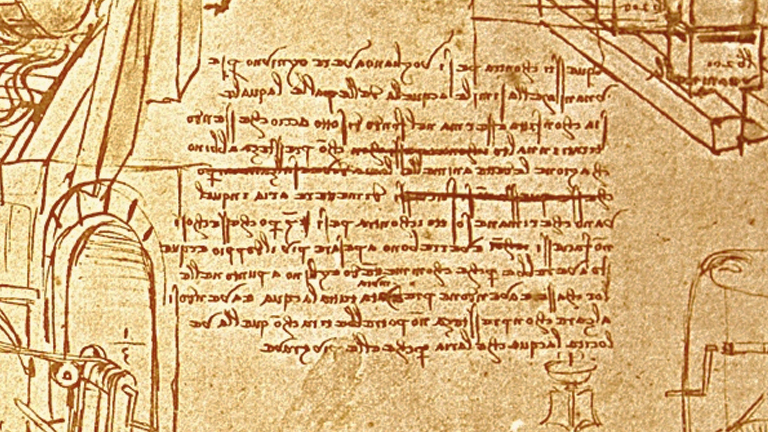
Mirror writing is not new! Its origin is obscure, but the best known of all people who used this style of communication was none other than Leonardo de Vinci and it may have been he who invented the concept – for reasons still unknown. Most interesting is that Leonardo could write – equally well, with both hands – and in communications intended for other people he wrote in the normal left-to-right way.
One well researched but still inconclusive idea is that it may have kept his hands clean. Scientists have spent countless hours attempting to explain why ten percent of the world is left-handed. It is an extremely difficult task to make such a determination because there are many variations that need consideration, i.e., dexterity (handedness) is not best determined by writing.
It is likely that each of us knows of someone (my father for example) who was forced by early grade schoolteachers to write with his right hand, but hammered and used other tools, left-handed.
Mirror writing on postcards is rare. There seemed to be a fad in the early decades of the twentieth century to send coded messages on postcards, but it was short-lived. Examples included messages in hieroglyphics, a homemade re-imagining of cuneiform, Morse Code, letter exaggeration, and tachygraphic systems designed by men like Sir Isaac Pitman, the English scholar, and John Robert Gregg, the Irish educator and publisher.
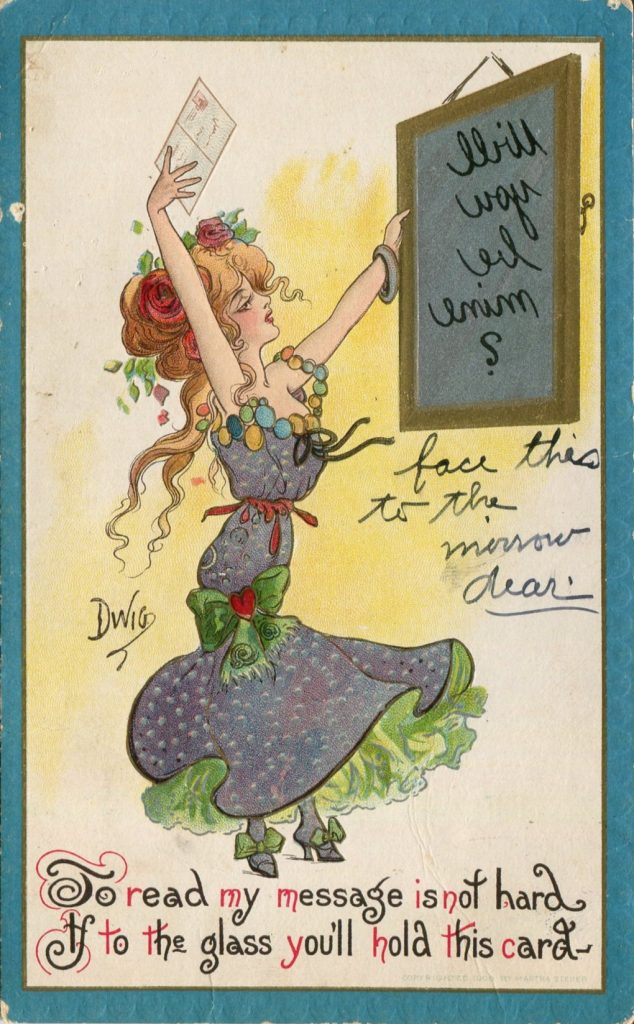
In the postcard world it is never safe to say “only” so I won’t, but there are very few postcards that use mirror writing in the theme. One of the few practitioners was the inimitable Clair Victor Dwiggins – known better to postcard collectors as, Dwig!


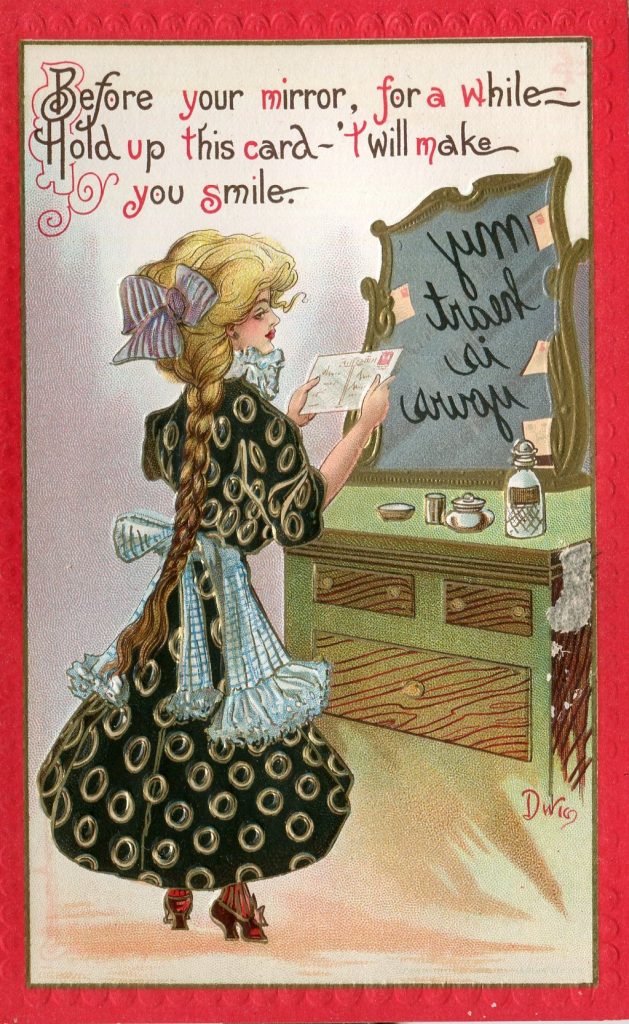
C. V. Dwiggins died on Monday night, October 27, 1958 after a long illness in a North Hollywood, California, nursing home. He was 84.
Dwig was born in Wilmington and lived in Findlay Ohio, until he began his newspaper career in 1893 at the Post Dispatch in St. Louis, Missouri. He moved to the New York World a few years later and introduced his now famous cartoon entitled School Days.
Like so many in his time, Dwig’s art was highly favored by a host of postcard publishers. He worked at different times, and only once as an exclusive contractor for companies like Marks, Tuck, Charles Rose, R. Kaplan, Gabriel, Edward Gross, and Cardinell- Vincent Company.
Late in his career his name recognition grew because his daily and Sunday cartoons appeared in over 100 newspapers nationwide. He also did a series of watercolor murals that he titled, American Rivers.
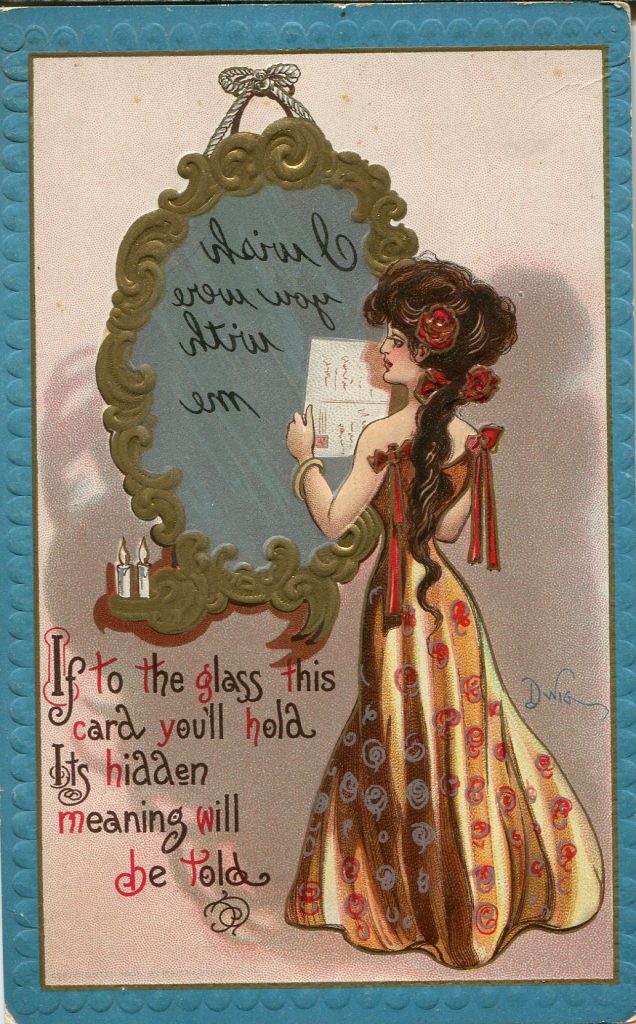
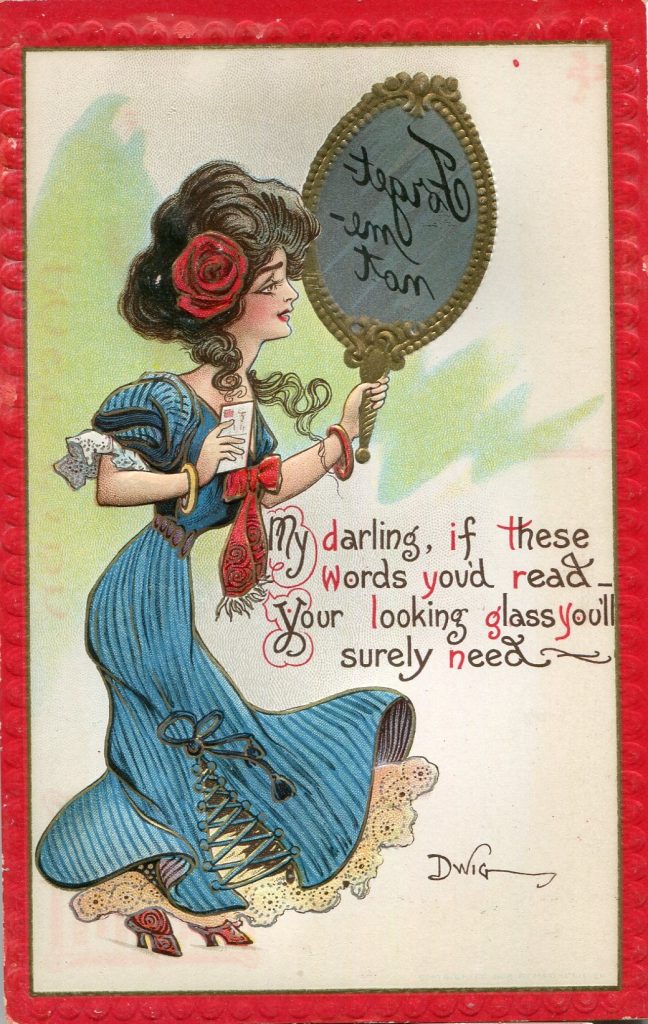
Mr. Dwiggins “Mirror Girl” postcards were published by Kaplan. The set has twenty-four designs. Each card shows an elegantly dressed young woman – some blond, others brunettes or redheads – holding a postcard and standing in front of or holding a postcard to a hand mirror enabling them to read the message on their card. The mystery message is, not surprisingly, difficult to read until it is held in front of a mirror.
The messages are all quite simple, “Will you be mine?” “Think of me sometimes.” “Won’t you say, yes?” “Forget me not.” or “Wish you were with me!”
C. V. Dwiggans “Dwig” postcards in recent years have faded in popularity but are still highly collectible. If you choose to collect them and want them all, be prepared to search for substantially more than five hundred
Example I have says I love you. Mailed from and to Albion, Maine, on April 24, 1912. Was unaware he lived in my hometown at onset of adult life. Local historical museum will be contacted to learn if they are aware of this.
Postcarding is an ongoing history lesson. Thank you for furthering my education.
Hello Ellie, nice article with several historical references that I didn’t know about. I believe that the DWIG “Mirror Writing” set only has twelve different designs. The DWIG “Fortune Teller” set of twelve also has some mirror writing. Perhaps that is how you got to the twenty-four designs noted in the article. By the way, I have started posting some of my DWIG Postcard Checklists on my CatalogIt HUB website at: https://hub.catalogit.app/217/folder/7c6e2680-c271-11ed-bf8f-4faf835de934 The Mirror Writing illustrations are posted, but I haven’t done the Fortune Teller set yet.
Thank you for this article. I have three cards from the ‘Mirror Writing’ and as a consequence of your article (and the comment of Dennis McBurney) I now have a greater idea of the artist and the set.
The message in the mirror seen in the middle card on the right side of the page is “My heart is yours”.